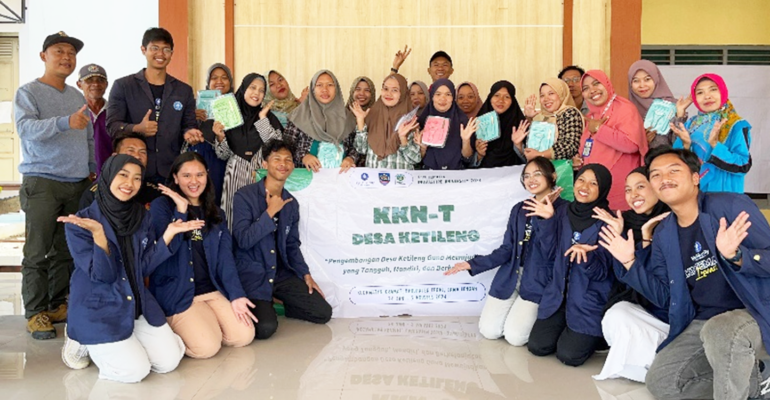KKNT IPB University Students Hold Stunting and Malnutrition Prevention Program in Ketileng Village

To reduce stunting data in the future, students of IPB University Innovation Real-Thematic Work Lecture (KKNT) Ketileng Village conducted a stunting and malnutrition prevention program for pregnant women and prospective mothers. The activity was held on 12/7.
KKNT students also conducted counseling related to Balanced Nutrition Guidelines (PGS) and Healthy Clean Living Guidelines (PHBS) which were attended by pregnant women and prospective mothers. The material was presented by Dinda, a student of the Nutrition Science study program at IPB University.
“Pregnant women and prospective mothers were chosen to improve the nutritional needs of prospective children and increase the knowledge of prospective mothers regarding nutritional needs. This activity is in the form of body measurements (anthropometry) to pregnant women and prospective mothers to then make a healthy eating menu according to their needs. This menu recommendation is printed in the form of an attractive brochure and can be used as a reference in daily cooking,” explained Dinda.
Ketileng Village is one of the Healthy Villages in Tegal Regency, Central Java, which welcomes the arrival of IPB University KKNT Innovation students. Various work programs that have been implemented are enthusiastically followed by the community.
Yetty, one of the community figure in the health sector, provided counseling and hemoglobin (Hb) measurements to prospective mothers to determine the symptoms of anemia. According to Yetty, this work program is in line with the posyandu work program, namely recording health data on prospective mothers and newlyweds.
“The implementation of this work program is expected to provide knowledge related to PGS, PHBS, and stunting in pregnant women and prospective mothers as measured by quantitative data from pre-test and post-test results,” she said. (*/Lp) (IAAS/NAU)



